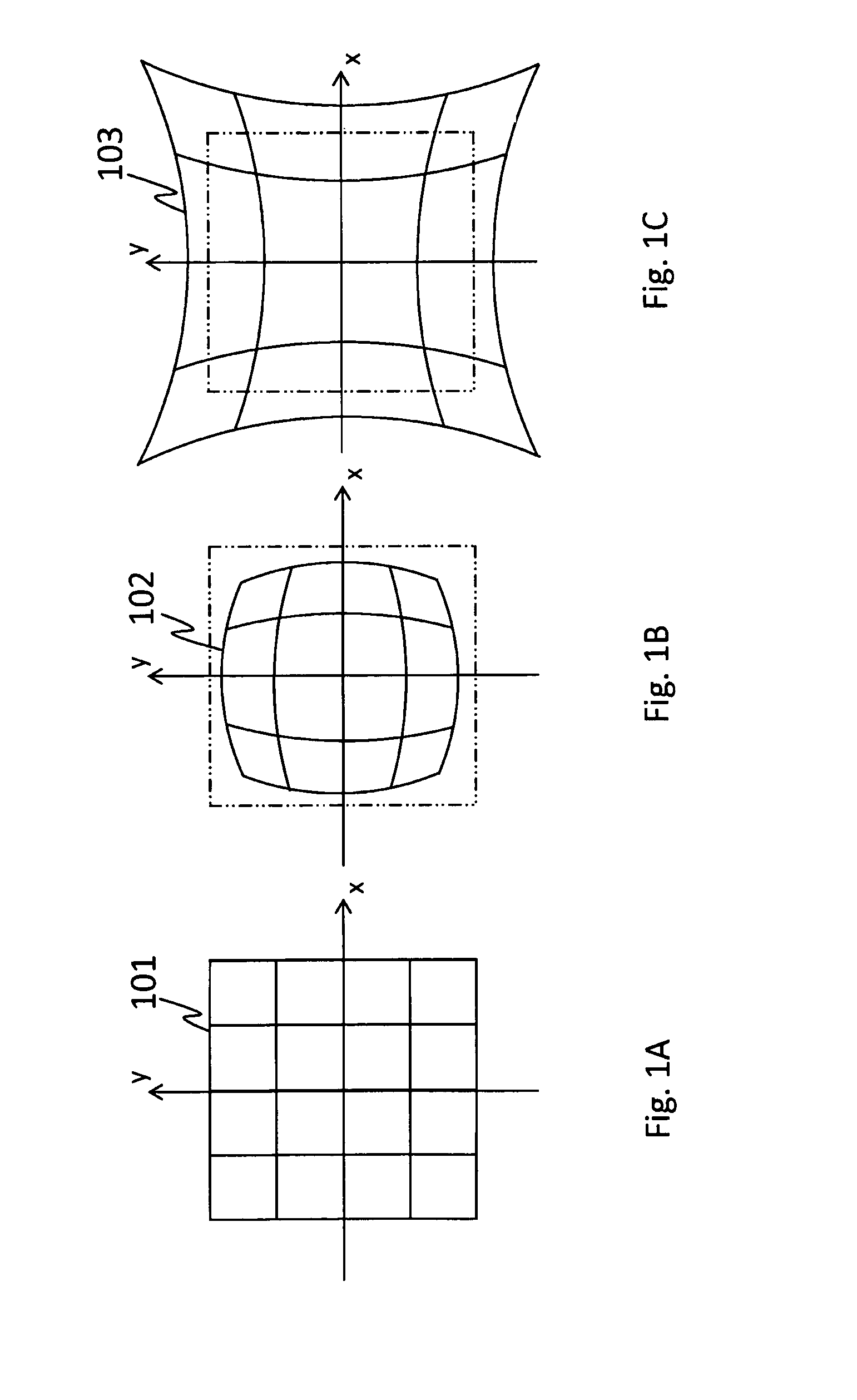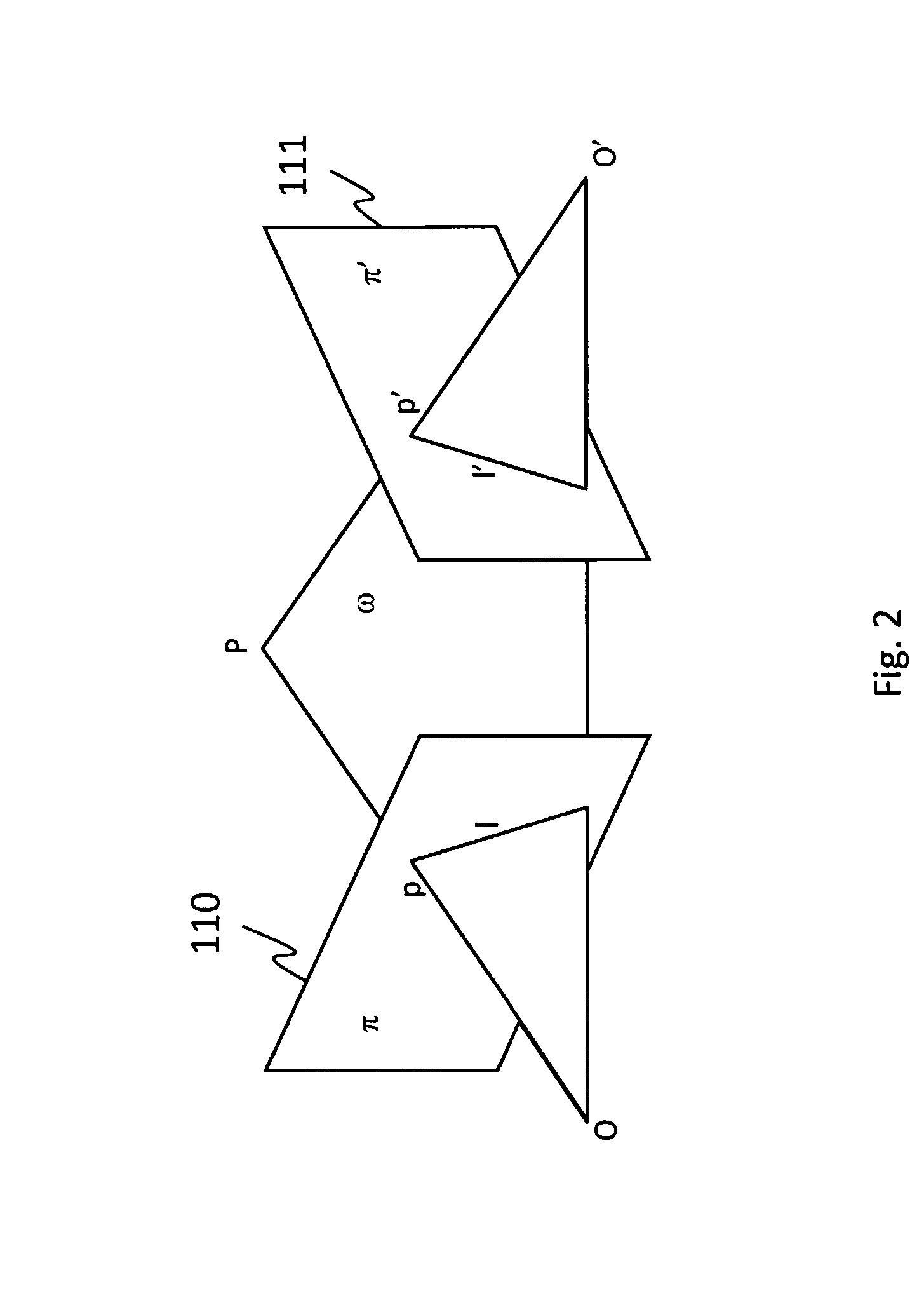Method and system for alignment of a pattern on a spatial coded slide image
a spatial coded slide image and pattern alignment technology, applied in the field of structured light stereoscopy, can solve the problems of not being able to correct after the projector, not being able to solve the problem of projector failure, and not being able to achieve good alignment along the epipolar line in the image of the camera
- Summary
- Abstract
- Description
- Claims
- Application Information
AI Technical Summary
Benefits of technology
Problems solved by technology
Method used
Image
Examples
Embodiment Construction
[0030]In order to find corresponding matches between the pattern projected by a projector and the pattern detected in the image captured by the camera, the present invention allows aligning higher resolution code, even near the sides and corners of the image. The projector lens will distort the image built on the projector slide. The slide is the physical imager component that is located before the optics of the projector. It is either a transmitting or reflecting imager component. The pattern codes aligned along ideal epipolar lines on the slide will thus result in curved lines instead of straight lines once projected through the lens. The method therefore aligns the pattern codes with the actual epipolar lines after the lens instead of aligning the pattern codes on the hypothetical non-distorted straight lines on the projector slide. The distortion induced by the lens optics of the projector is first modeled and the distortion model is then applied to deform the coded patterns ini...
PUM
 Login to View More
Login to View More Abstract
Description
Claims
Application Information
 Login to View More
Login to View More - R&D
- Intellectual Property
- Life Sciences
- Materials
- Tech Scout
- Unparalleled Data Quality
- Higher Quality Content
- 60% Fewer Hallucinations
Browse by: Latest US Patents, China's latest patents, Technical Efficacy Thesaurus, Application Domain, Technology Topic, Popular Technical Reports.
© 2025 PatSnap. All rights reserved.Legal|Privacy policy|Modern Slavery Act Transparency Statement|Sitemap|About US| Contact US: help@patsnap.com



